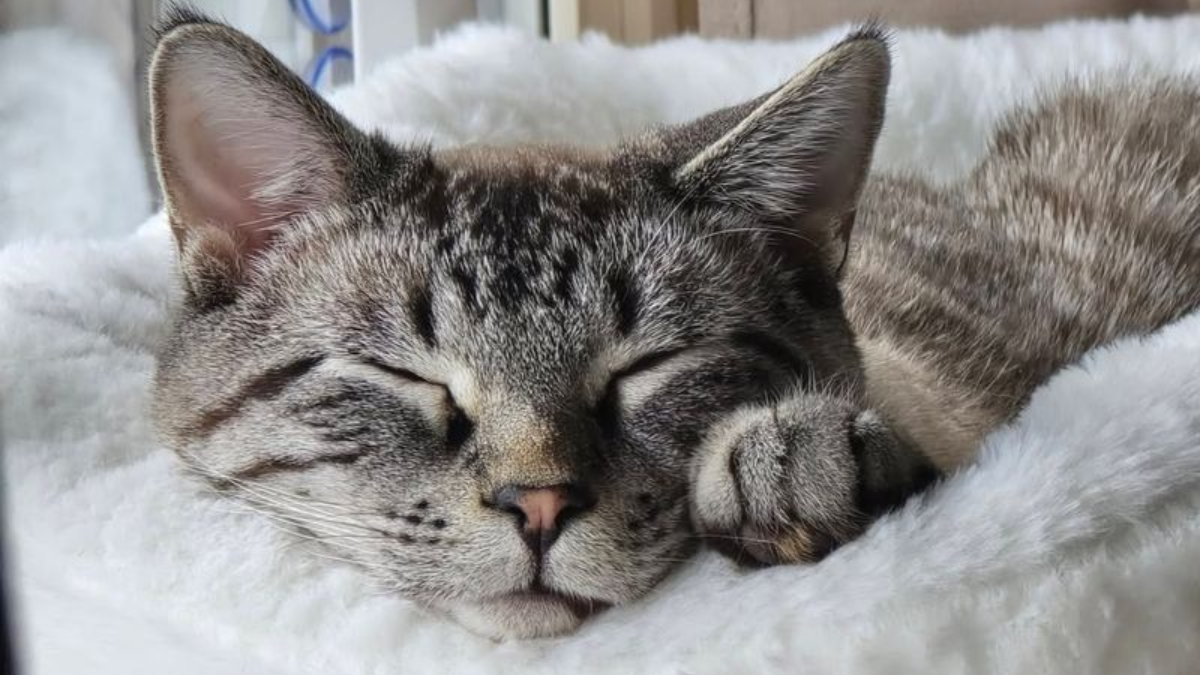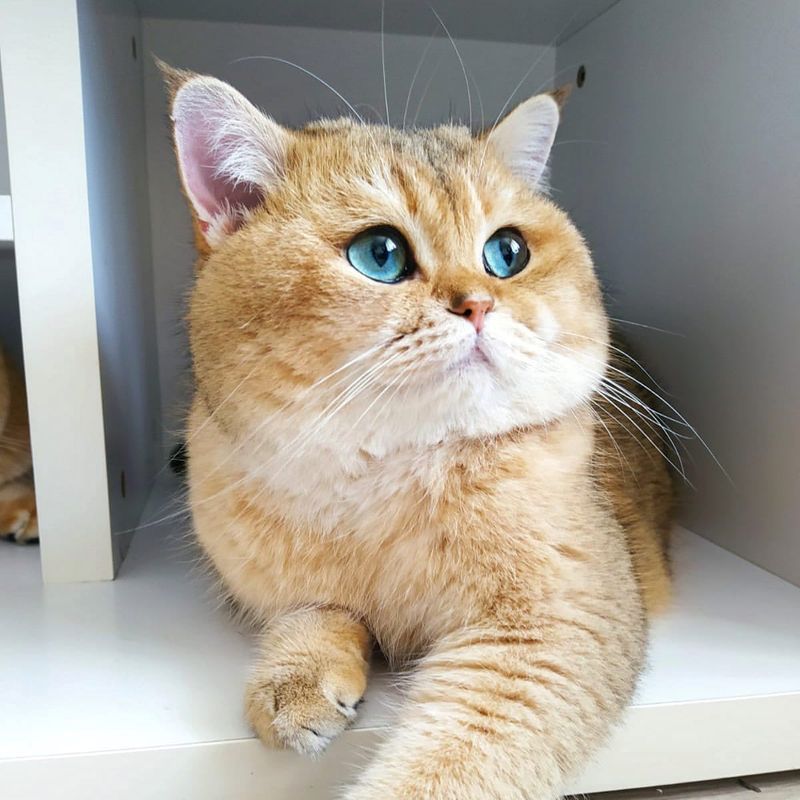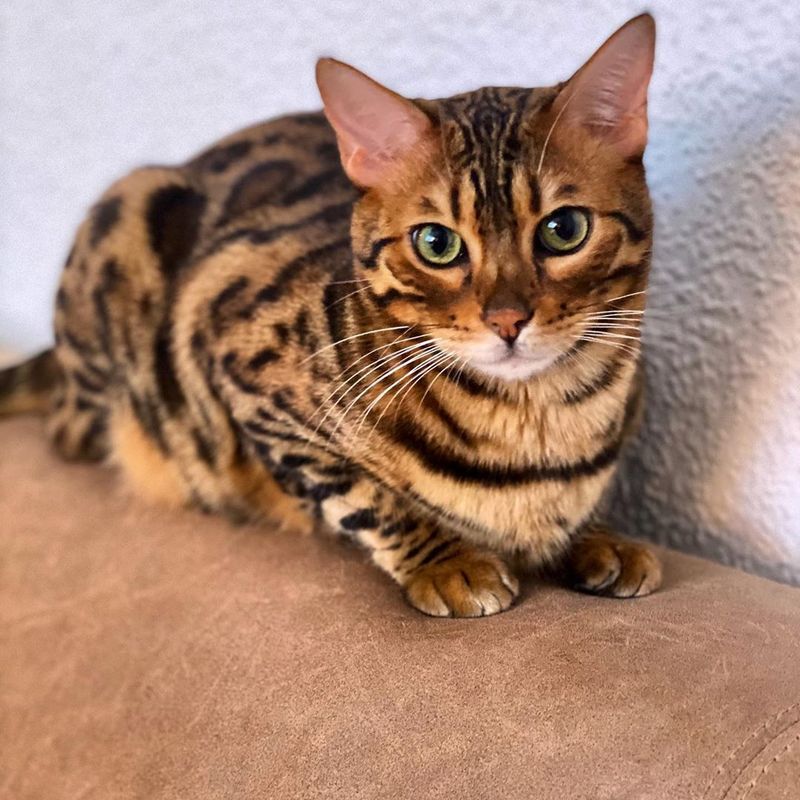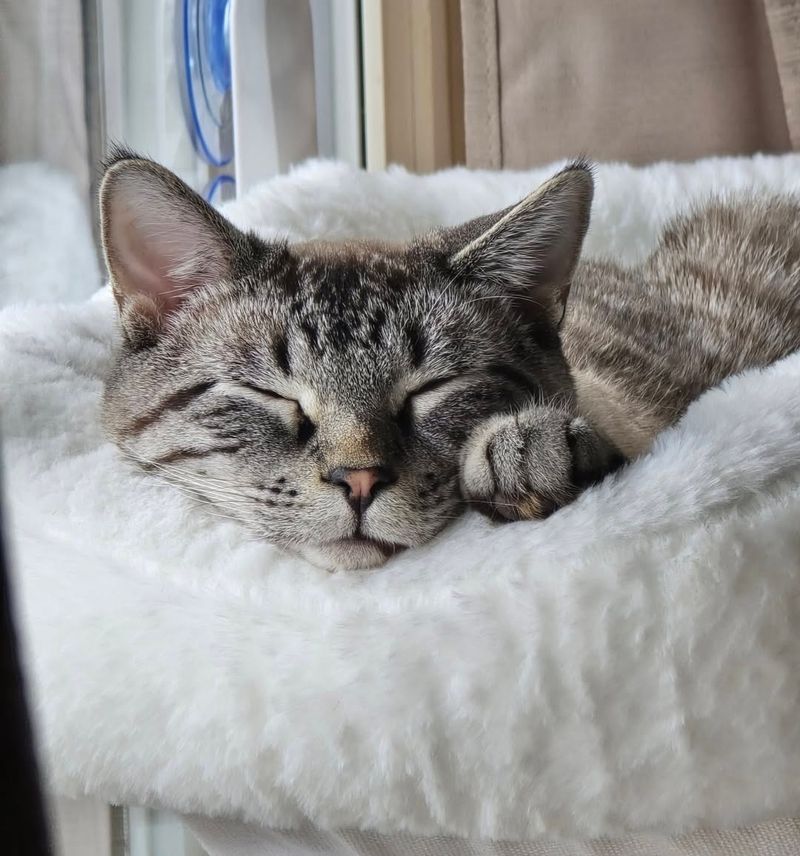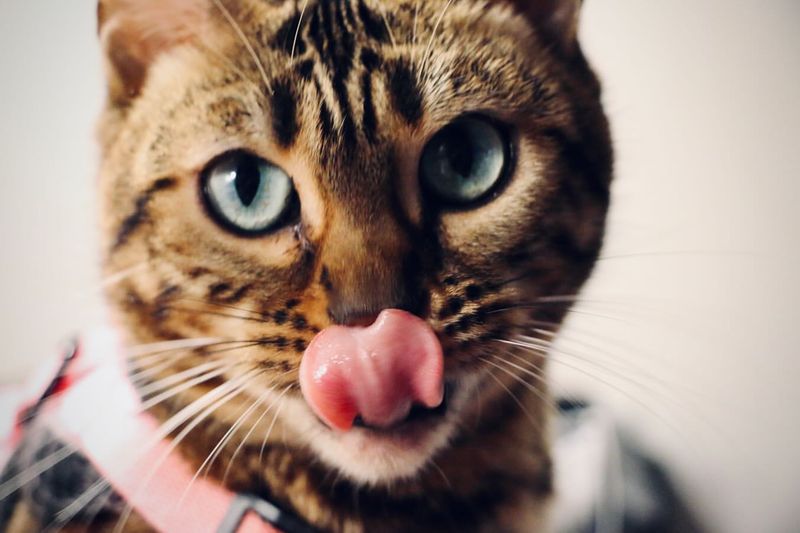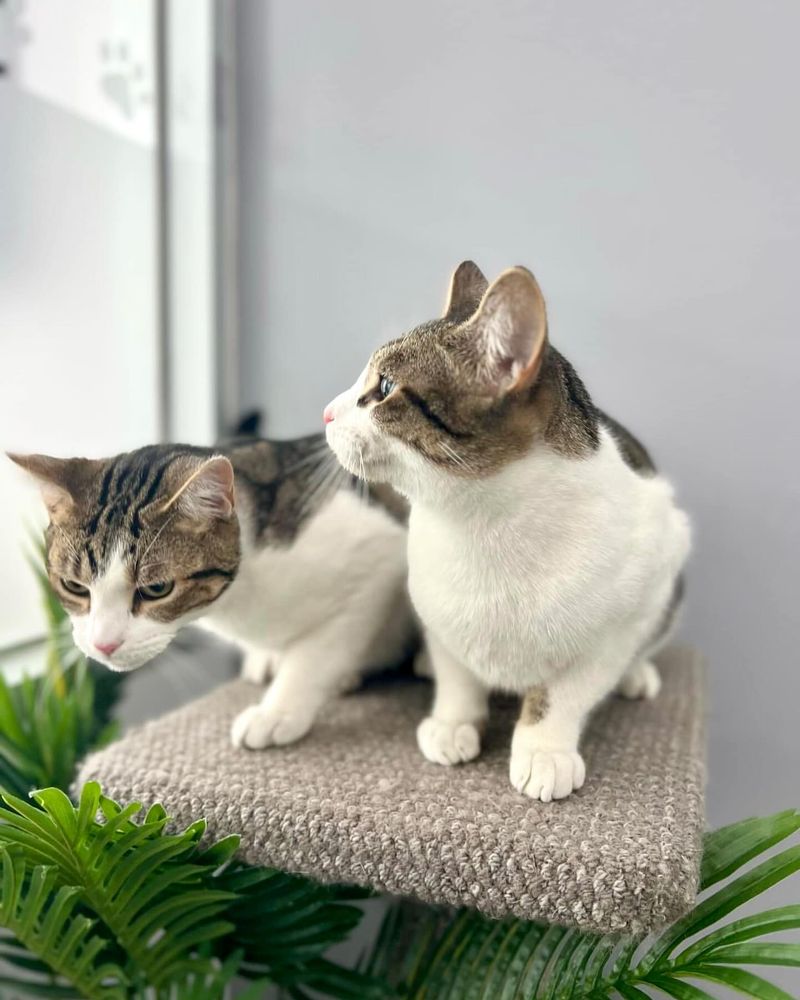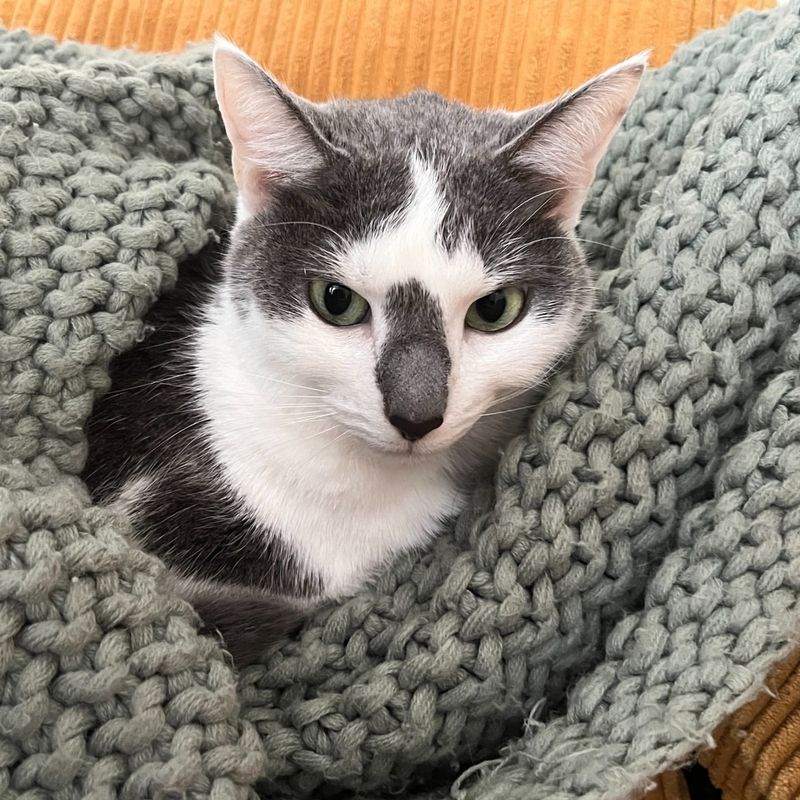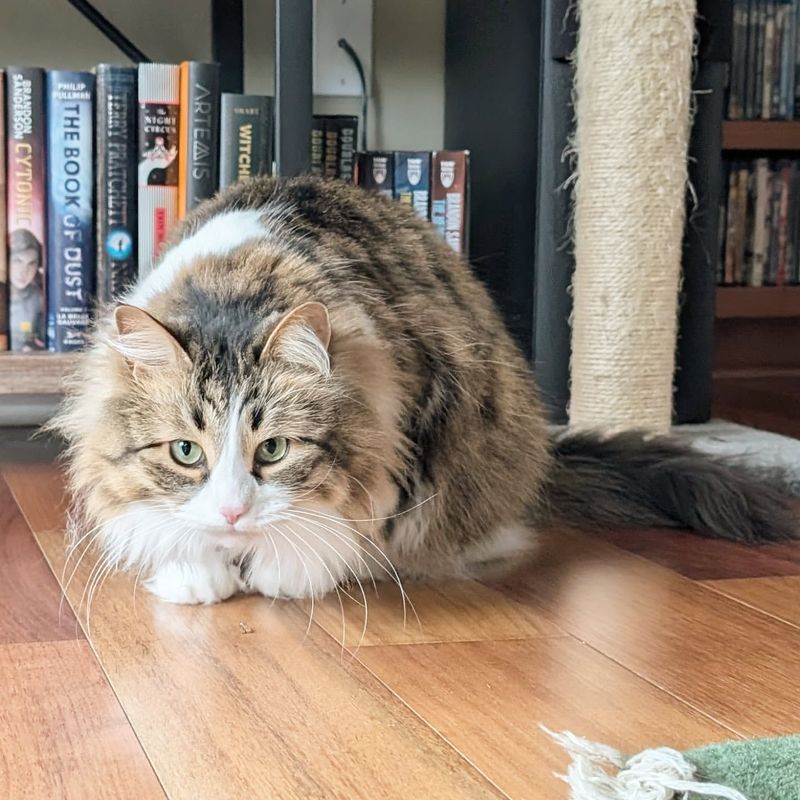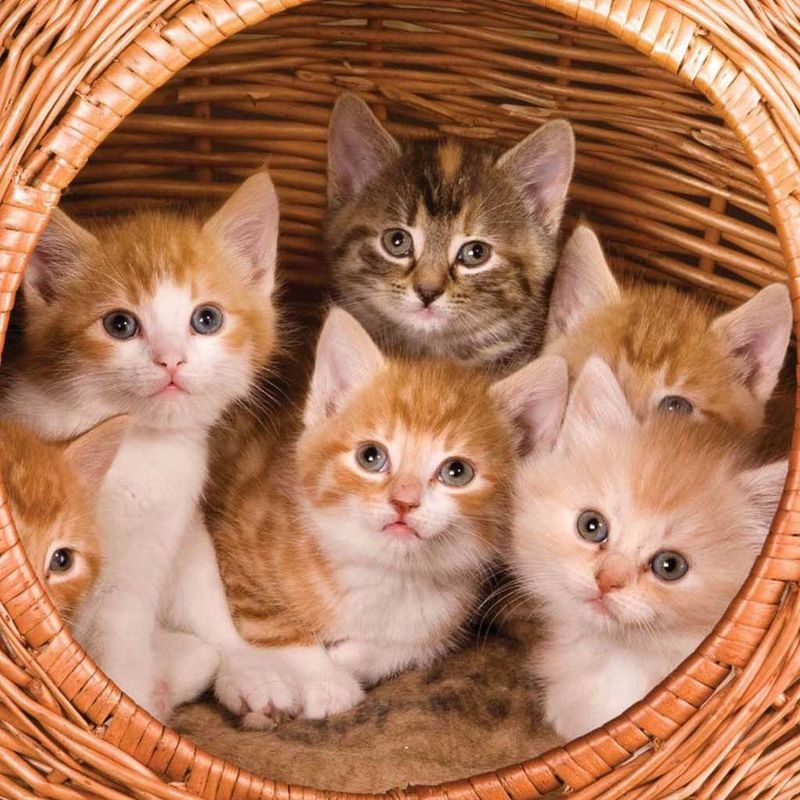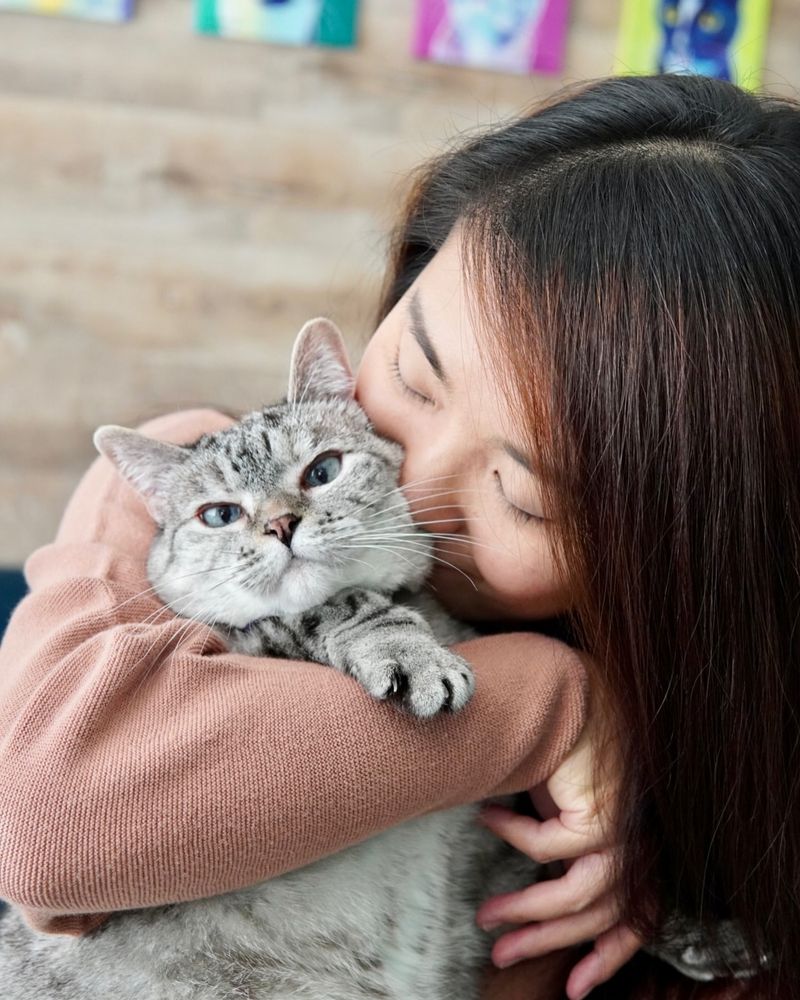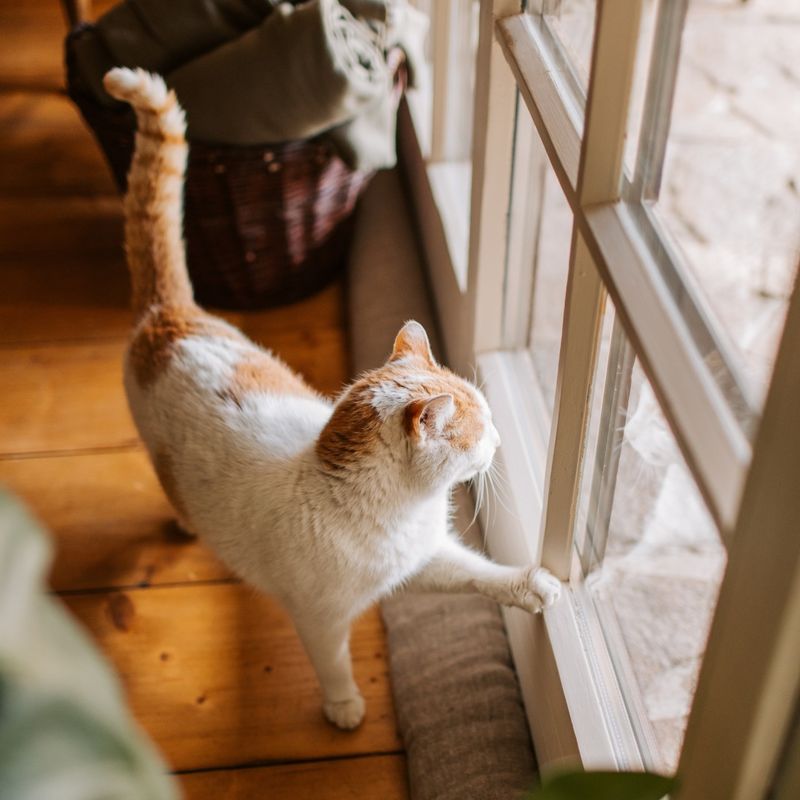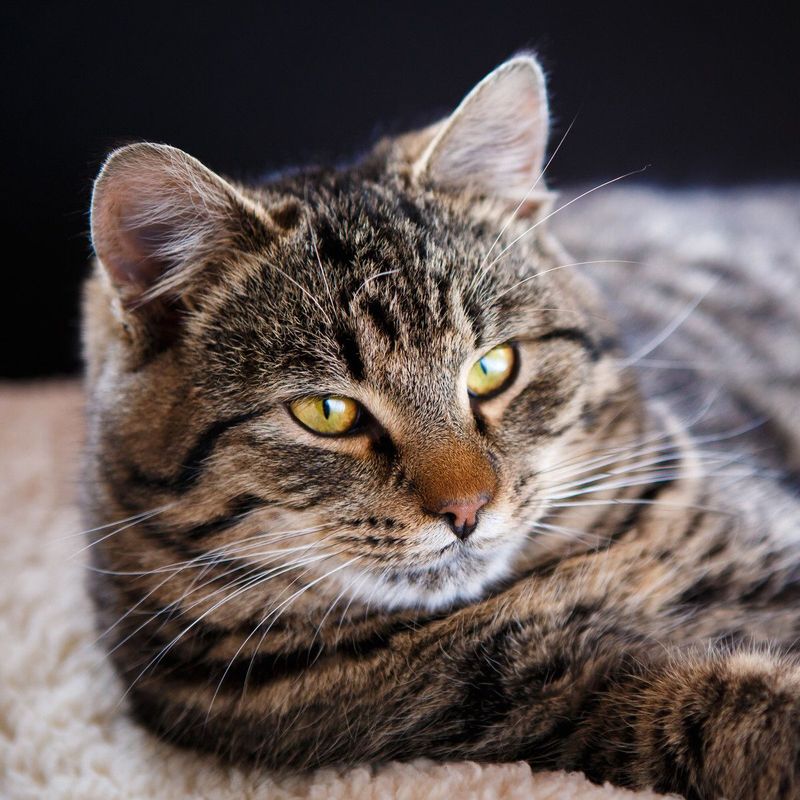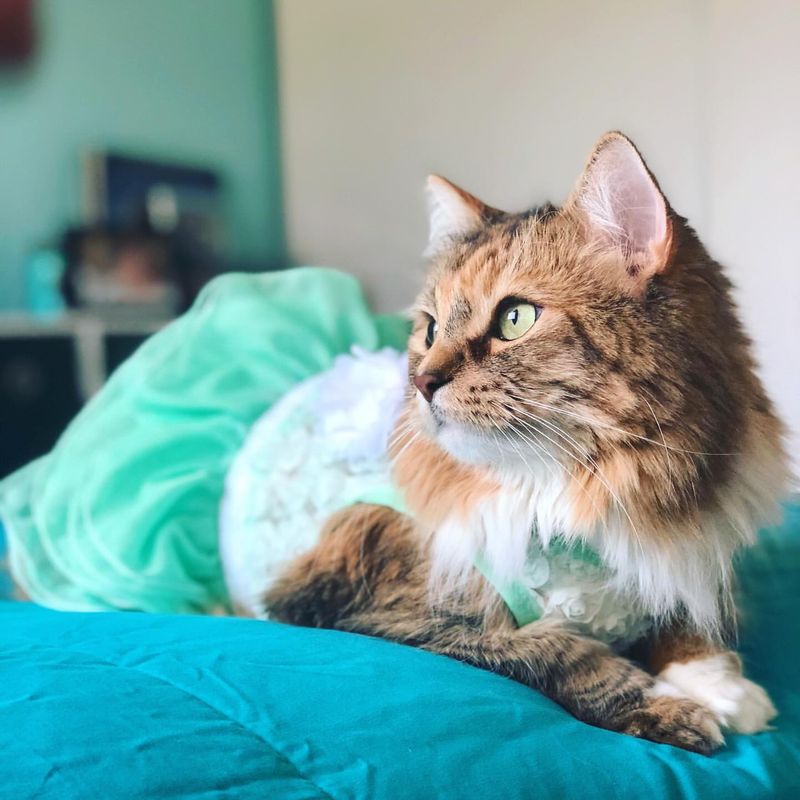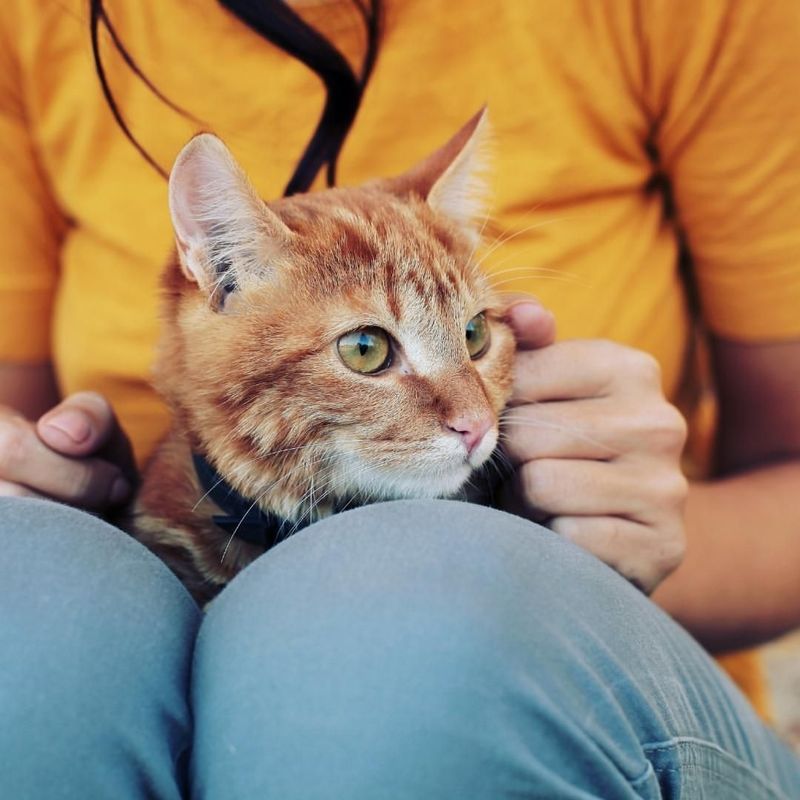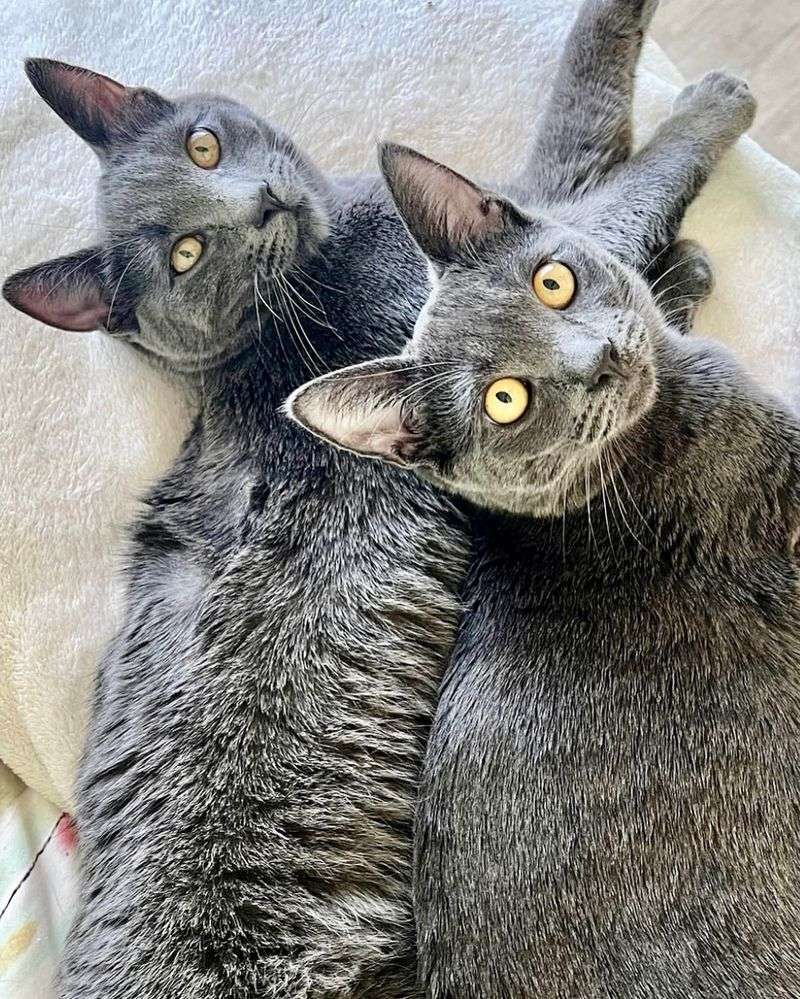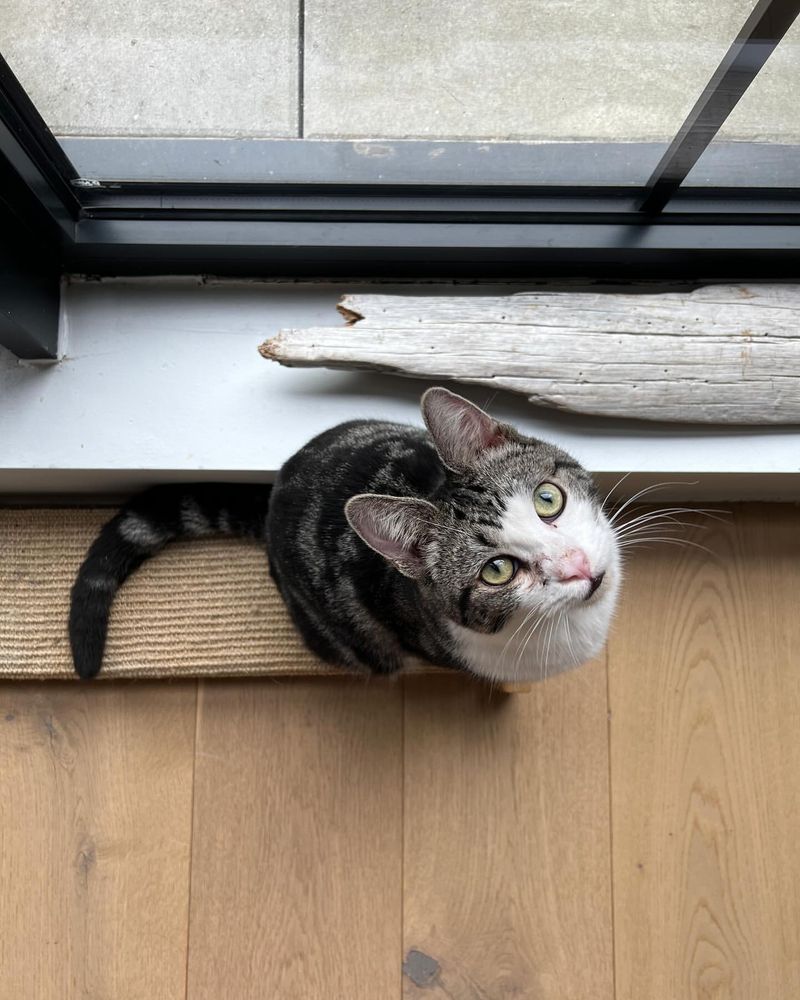📖 Table of Content:
- 1. Contentment and Comfort
- 2. Communication with Humans
- 3. Healing and Pain Relief
- 4. Hunger or Request for Food
- 5. Bonding with Other Cats
- 6. Stress and Anxiety Relief
- 7. Luring Prey
- 8. Signaling Relaxation to Kittens
- 9. Expressing Affection
- 10. Exploration and Curiosity
- 11. Marking Territory
- 12. Reassurance During Illness
- 13. Expressing Gratitude
- 14. Mating Behavior
- 15. Seeking Attention
Few sounds in the world are as comforting as the soft, rhythmic purr of a contented cat. It’s the universal sign that your feline friend is happy… or is it?
While purring is often seen as the ultimate hallmark of kitty bliss, there’s a lot more to it than meets the ear. Cats are masters of subtlety, and their purring can carry hidden meanings, from asking for attention to self-soothing during stress.
In this article, we’ll unravel the mystery behind the mesmerizing purr. Whether you’re a seasoned cat whisperer or a curious first-time cat parent, get ready to discover 15 fascinating reasons why your furry companion turns on their inner motor.
1. Contentment and Comfort
Cats often purr when they’re feeling cozy and content. Imagine your feline friend lounging on a sunlit windowsill, basking in the warm glow. This serene setting inspires a rumbling purr that signifies complete relaxation. When a cat purrs in this way, it’s a sign that they’re at ease in their surroundings, enjoying the simple pleasures of life.
This behavior is not just about physical comfort; it reflects emotional satisfaction. The rhythmic sound is soothing not only to the cat but also to those nearby. It’s a gentle reminder to appreciate the peaceful moments in life. By responding to their purrs with affection, you strengthen the bond with your furry companion.
2. Communication with Humans
Purring can serve as a form of communication between cats and humans. When a cat looks into your eyes and starts to purr, it might be trying to tell you something specific. Perhaps it’s time for a meal, or maybe they crave a little attention.
This form of communication is especially prevalent in cats that have a close relationship with their human companions. The purring acts as a bridge, conveying needs and emotions without words. It’s fascinating how cats have adapted this instinctive behavior to interact with humans.
By paying attention to the context in which your cat purrs, you learn to interpret their language, making interactions more meaningful and satisfying for both parties.
3. Healing and Pain Relief
Purring isn’t always about happiness; it can also be a natural healing mechanism. A cat may purr to relieve pain or discomfort. The low-frequency vibrations help stimulate healing processes within the body, providing relief from various ailments.
This self-healing ability is one of nature’s wonders, showing the complexity and resilience of cats. When a cat purrs to heal, it’s often accompanied by rest and relaxation, allowing the body to mend itself. Whether recovering from surgery or a minor injury, purring can be an integral part of their healing journey.
Recognizing this behavior helps cat owners provide the necessary support and care, ensuring a comfortable recovery process for their beloved pets.
4. Hunger or Request for Food
Cats can purr to express hunger or a desire for food. If your feline friend approaches with a persistent purr, followed by a glance at their food bowl, it’s a clear message. Hunger-induced purring often has a slightly different tone, more insistent and demanding.
This behavior might stem from a learned response, as cats realize that purring can draw attention to their needs. By reinforcing this behavior with timely feedings, cats continue to use it as an effective communication tool.
For cat owners, recognizing these hunger cues can lead to more harmonious mealtime routines, ensuring that their pets’ nutritional needs are consistently met. Understanding this behavior enhances the relationship, making feeding times more engaging and mutually rewarding.
5. Bonding with Other Cats
Purring isn’t solely reserved for human interaction; it’s also a means of bonding with fellow felines. When cats purr in each other’s presence, it often signifies friendship and mutual trust. This harmonious sound fosters a sense of community, enhancing their social connections.
The act of purring during grooming sessions or snuggling time strengthens the bond between cats. It’s a shared experience that promotes relaxation and unity. While humans may be mere observers of this feline interaction, the sight and sound of cats purring together can be heartwarming.
Understanding this social aspect of purring provides insights into your cat’s relationships, helping you foster an environment where they feel secure and connected.
6. Stress and Anxiety Relief
Purring can be a soothing technique for cats dealing with stress or anxiety. In unfamiliar situations, a cat might purr to calm itself, using the vibrations as a form of self-soothing. This natural coping mechanism helps them navigate challenging environments.
Cats are sensitive creatures, and changes in their surroundings can trigger anxiety. Whether it’s a trip to the vet or moving to a new home, the rhythmic purrs serve as a comforting backdrop, easing their nerves.
For pet owners, recognizing stress-induced purring is crucial. It allows them to provide support and understanding, creating a safe space for their feline friends. By acknowledging this behavior, you can help your cat adapt to new experiences with confidence.
7. Luring Prey
While it may seem counterintuitive, some cats purr while hunting to lure prey. This soft sound can disguise their presence, making them appear less threatening to unsuspecting animals. This tactic showcases the cunning and adaptability of cats in the wild.
The calming rhythm of a purr can lower the prey’s guard, allowing the cat to close in without raising alarm. It’s a fascinating glimpse into the survival instincts embedded in domesticated cats, harking back to their wild ancestors.
For those observing their cats in play or in the wild, understanding this behavior can add depth to the appreciation of their hunting skills. It highlights the complexity and intelligence of feline behavior, even in seemingly benign situations.
8. Signaling Relaxation to Kittens
Mother cats often purr to signal relaxation and safety to their kittens. This soothing sound creates a comforting environment, helping newborns feel secure and protected. The vibrations also guide blind and deaf kittens back to the warmth of their mother.
This maternal behavior is a crucial aspect of early development, fostering bonds and teaching kittens about their surroundings. The gentle purr reassures them, acting as a signal that all is well in their world.
Understanding this natural maternal instinct offers insights into the nurturing side of cats. It highlights how purring plays a vital role in the growth and emotional health of young kittens, laying the foundation for their interactions with the world.
9. Expressing Affection
Purring is often a sign of affection, a way for cats to express love and warmth. When a cat rubs against you and begins to purr, it’s their way of showing appreciation and forming a deeper connection.
This affectionate gesture is a testament to the trust and comfort they feel in your presence. It’s an opportunity to reciprocate the love, strengthening the bond you share. For many cat owners, these moments are cherished, adding joy and companionship to everyday life.
By understanding this expression of affection, you can cultivate a more fulfilling relationship with your cat, filled with mutual respect and admiration. It’s a reminder of the unique and rewarding bond that exists between humans and their feline companions.
10. Exploration and Curiosity
Cats sometimes purr when they’re exploring new environments, driven by curiosity and intrigue. As they investigate unfamiliar territories, the purring serves as an accompaniment to their inquisitive nature.
This behavior reflects the excitement and joy they find in discovering the world around them. The soft vibrations add to the sensory experience, enhancing their exploration. It shows that purring isn’t limited to calm or content states but can also be part of an adventurous spirit.
For pet owners, fostering an environment that encourages exploration and play can lead to a happier, more engaged cat. By recognizing the context of exploratory purring, you can better understand and support their natural instincts and curiosities.
11. Marking Territory
Purring can be part of a cat’s territorial behavior, marking their presence with sound and scent. When a cat rubs against furniture or objects while purring, it’s a way to claim ownership and feel secure in their domain.
This behavior is rooted in instinct, providing them with a sense of control and familiarity. The purring acts as a soothing element, reinforcing their connection to the space. It’s a subtle but significant way cats assert themselves within their environment.
Understanding this territorial aspect of purring helps cat owners respect their pet’s need for personal space. By acknowledging and supporting this behavior, you create a harmonious living environment that caters to their natural instincts.
12. Reassurance During Illness
Purring can provide reassurance to cats when they’re ill or feeling unwell. The gentle vibrations offer comfort and a sense of security, acting as a natural remedy to alleviate stress and anxiety during sickness.
This behavior is a way for cats to cope with discomfort, soothing themselves through the healing power of purring. It’s not merely a response to pain but a complex interaction between body and mind, promoting relaxation and recovery.
For pet owners, recognizing purring as a sign of illness can be vital in providing appropriate care and attention. By observing this behavior, you can better understand your cat’s needs and offer support, ensuring a more comfortable and healing environment.
13. Expressing Gratitude
Cats may purr to express gratitude, especially after a satisfying meal or a comforting interaction. This behavior is a way of showing appreciation, reflecting a sense of fulfillment and happiness.
The soothing purr is a thank you for the care and affection they receive, enhancing the bond between cat and owner. It’s a simple yet profound expression of contentment, highlighting the mutual joy found in companionship.
By recognizing and responding to these purring moments, you reinforce the positive aspects of your relationship with your cat. It fosters trust and understanding, allowing both parties to enjoy the rewards of a loving and supportive connection.
14. Mating Behavior
Purring can be part of a cat’s mating behavior, a way to communicate readiness and attraction to potential mates. This soft vibration adds to the complex array of signals used during courtship, enhancing their interactions.
The purring serves as an invitation, creating an atmosphere of comfort and attraction. It’s a fascinating aspect of feline biology, showcasing the diverse ways in which cats express themselves in intimate situations.
For cat owners, understanding this behavior can provide insights into their pet’s reproductive instincts and needs. By observing these cues, you can better manage their environment and interactions, ensuring a healthy and balanced life for your feline friends.
15. Seeking Attention
Cats often purr to get attention, especially when they’re feeling ignored or want interaction. If your cat approaches with loud purrs and an insistent gaze, it’s likely seeking engagement and play.
This behavior is a charming way for cats to assert themselves, using their unique sound to capture focus. It’s a reminder of their social nature and desire for companionship, inviting you to share in their world.
For cat owners, responding to these attention-seeking purrs can lead to more fulfilling interactions. By understanding and acknowledging this behavior, you create opportunities for connection and joy, enriching your relationship with your feline companion.
